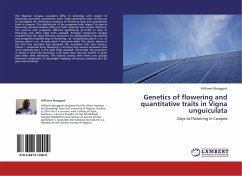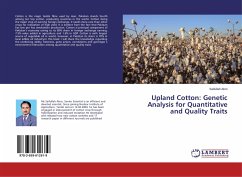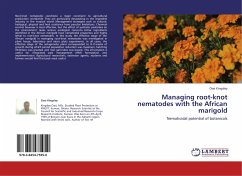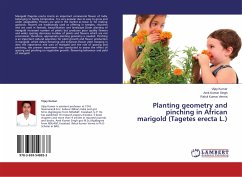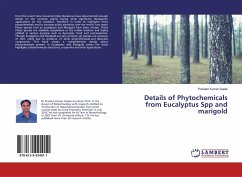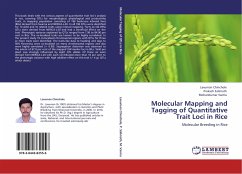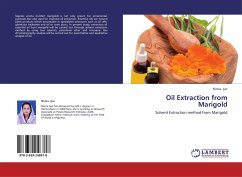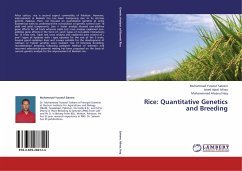
Exploitation of Heterosis for Quantitative Traits in Marigold
Versandkostenfrei!
Versandfertig in 6-10 Tagen
47,99 €
inkl. MwSt.

PAYBACK Punkte
24 °P sammeln!
Marigold breeding has become important due to the increased preference for novel traits in the crop. Mostly, marigold varieties that are grown in India are open-pollinated, less vigorous having shorter blooming period resulting in less flower yield of loose flowers. The F1 hybrids are more advantageous over open-pollinated varieties due to their profuse and uniform flowering, large flower size, medium stature, earliness, biotic/abiotic stress resistance, higher flower yield, etc. Inter-specific F1 hybrids of marigold being triploid have longer blooming period resulting in more yield and more s...
Marigold breeding has become important due to the increased preference for novel traits in the crop. Mostly, marigold varieties that are grown in India are open-pollinated, less vigorous having shorter blooming period resulting in less flower yield of loose flowers. The F1 hybrids are more advantageous over open-pollinated varieties due to their profuse and uniform flowering, large flower size, medium stature, earliness, biotic/abiotic stress resistance, higher flower yield, etc. Inter-specific F1 hybrids of marigold being triploid have longer blooming period resulting in more yield and more suitability for landscape/beautification purposes. The use of male sterile lines available now makes the process of hybridization easier and economical. The private sector has been more active in the development of hybrids both in India and across the world. The seed of promising hybrids is sold at a premium often by numbers rather than their weight. The farmers are at a disadvantage to purchase these private sector seeds at a higher price in the absence of hybrids from public sector organizations. Therefore, there is an urgent need for the development of interspecific hybrids of marigold.



